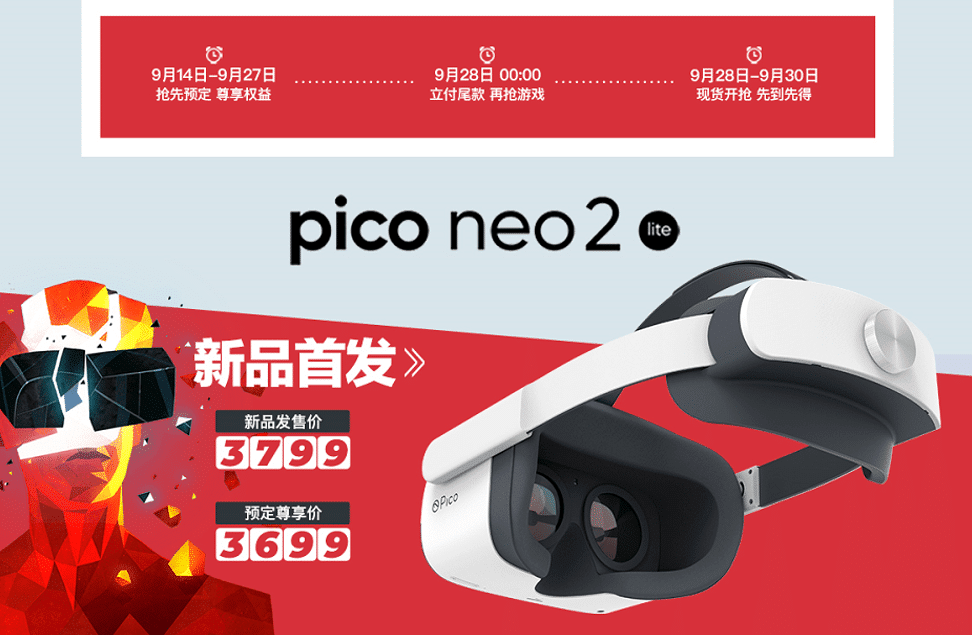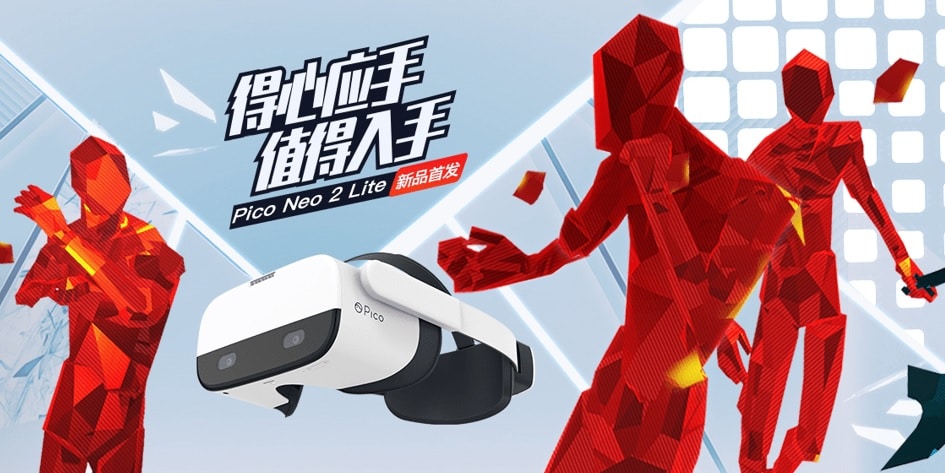Pico Launching a Cheaper Version of the Pico Neo 2
Pico is launching a cheaper version of its standalone virtual reality headset Pico Neo 2, which is aimed at the consumer market.

The Pico Neo 2 Lite, like the Oculus Quest headset, provides six degrees of freedom for both the heads and hands. However, the controllers are registered by magnetic field tracking.
The standalone virtual reality headsets will provide a 4K display, 6GB of RAM as well as 64GB of storage for the virtual reality apps. These correspond to the specs of the Oculus Quest 2 headset. However, the Pico Neo 2 Lite is much slower as it leverages a Snapdragon 845 processor rather than an XR2 chipset like Quest 2.
The Pico Neo 2 Lite is the Chinese manufacturer’s consumer-oriented version of the original Pico Neo 2 that was launched across the globe early this for enterprise uses. According to the Chinese report on the launch, The Neo 2 Lite will have a starting price of $560 for the 64GB version.

Pico Neo 2 Lite Comes with Superhot VR
According to the promotional images, the Pico Neo 2 Lite appears to have very high-quality headgear with a comfort strap that looks very similar to Oculus Quest 2 Elite Strap that is purchased separately. However, it is unlikely that this strap also features eye-tracking like in the more premium Pico Neo 2. The Neo 2 also leverages an electromagnetic anti-occlusion tracking to realize 6DoF support.
Pico has previously launched consumer headsets in the Western markets but they never gained much traction. However, the Neo 2 Lite will be launching with one of the best virtual reality games at the moment- Superhot VR. This is also only the second VR headset to get the native version of virtual reality right which could signal that Pico may be looking to build a broader ecosystem for the platform, something that its VR headsets have critically lacked in the past. However, it takes a lot of time and investments to build an Oculus-like VR ecosystem with hardware, software, developer community and a marketplace with hundreds of apps. Fortunately for end users, the Pico Neo Lite 2 also supports wireless streaming on SteamVR.
The Pico Neo 2 Lite hits the market in China on September 28. According to a Pico spokesman, these virtual reality headsets are intended exclusively for the Chinese market. Pico is currently focused on the B2B market segment and has no plans of bringing its Neo 2 Lite to the markets in US and Europe.
Buyers in the US and Europe interested in Pico products can still purchase the Neo 2 and Neo 2 Eye which are enterprise/B2B VR hardware. These cost $699 and $899 respectively. In comparison with the just unveiled Pico Neo 2 Lite, the B2B headsets offer end users 128GB of storage instead of 64GB storage like in the Neo 2 Lite. Pico’s B2B hardware also features special industrial apps and services targeting business users. The Pico Neo 2 Eye is also built with an integrated eye-tracking system.
Pico is embarking on a Chinese quest with the Pico Neo 2 Lite, dangling an app ecosystem that is attractive to end users and through this, growing its customer base. In Europe and the US, the Neo 2 Lite would have a hard time breaching Facebook’s dominance, especially following the launch of the cheaper and high-spec Oculus Quest 2 that now gives everyone a good reason to try out VR hardware. The Oculus Quest 2 headset will be released on October 13.
https://virtualrealitytimes.com/2020/09/26/pico-launching-a-cheaper-version-of-the-pico-neo-2/https://virtualrealitytimes.com/wp-content/uploads/2020/09/Pico-Neo-2-Lite-with-Superhot-VR-600x392.pnghttps://virtualrealitytimes.com/wp-content/uploads/2020/09/Pico-Neo-2-Lite-with-Superhot-VR-150x90.pngHardwareTechnologyVR HeadsetsPico is launching a cheaper version of its standalone virtual reality headset Pico Neo 2, which is aimed at the consumer market. The Pico Neo 2 Lite, like the Oculus Quest headset, provides six degrees of freedom for both the heads and hands. However, the controllers are registered by magnetic...Sam OchanjiSam Ochanji[email protected]EditorVirtual Reality Times - Metaverse & VR
